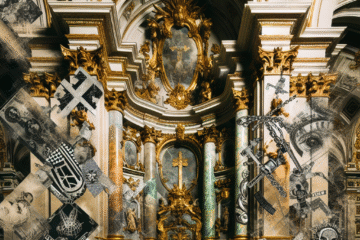Introduction: The Art of Ephemerality
Long before the rise of blockchain technology and the speculative buzz of NFTs, a different kind of disruption was quietly detonating within the art world. In the 1950s and 60s, a group of radical visionaries began creating artworks that were not meant to last. They wanted their creations to decay, vanish, or destroy themselves—on purpose. This movement, known as Auto-Destructive Art, was a direct response to the post-war industrial world, imbued with a deep sense of political urgency and a philosophical rejection of commodified permanence. Among its trailblazers was Gustav Metzger, whose art declared war not only on aesthetic tradition but also on the institutions that sought to preserve artworks indefinitely.
Post-War Dissonance: Birth of Auto-Destructive Art
The genesis of Auto-Destructive Art can be traced to the chaos and trauma of World War II, particularly in Europe. The war had scarred landscapes and psyches alike, and artists began questioning the very foundation of civilization—its values, its violence, and its obsession with control. Gustav Metzger, born to Polish-Jewish parents and a Holocaust survivor, distilled these experiences into a radical art practice. In 1959, he publicly introduced the concept of Auto-Destructive Art, defining it as a form of creative expression that mirrored the society’s compulsion toward self-destruction. Metzger’s early works used acid to corrode nylon sheets in front of live audiences—acts of transformation that served not only as performance but protest.
The Philosophical Core: Art as Anti-Object
At the heart of Auto-Destructive Art was a philosophical denial of the art object’s value as a commodity. Metzger and others viewed traditional art’s permanence as a symptom of authoritarian ideologies: to preserve an object indefinitely meant to strip it of its dynamism, freeze it in time, and convert it into a museum relic—or worse, an asset. Instead, Metzger envisioned art as an event, not an object. His ‘Manifesto of Auto-Destructive Art’ argued for works that would destroy themselves in a few seconds, like jet engines shredding plastic sheets or paper decomposing under electric charge. These artworks were not merely about destruction—they were about liberation, about letting art mirror the entropy of life itself.
Ephemeral Echoes: Rock Music and Counterculture
The power of Auto-Destructive Art resonated beyond galleries and exhibitions and seeped into the broader culture of the 1960s, aligning naturally with the ethos of rock music and anti-establishment movements. Metzger influenced figures such as Pete Townshend of The Who, who famously staged the smashing of musical instruments on stage—a visceral enactment of form meeting force. Meanwhile, artists like Jean Tinguely choreographed machines that destroyed themselves in balletic routines of smoke and ruin, as seen in his 1960 installation “Homage to New York” at MoMA, which partially self-destructed in chaos before an audience of elite patrons. Even fleeting artistic acts, such as performance and land art, began to regard impermanence as a virtue rather than a flaw.
Legacy and Digital Rebirth: NFTs as the New Paradox
Fast forward to the 21st century, and we find a profound irony. The Non-Fungible Token, or NFT, promises digital permanence through decentralized blockchain technology, offering unique signatures for digital images and files. Yet the underlying anxiety remains the same: what do we actually own when we collect art? What does authenticity mean in a replicable medium? Interestingly, some contemporary artists have looked back to Metzger’s principles to stage new forms of ephemeral digital art—works programmed to delete themselves or mutate irreversibly over time. Projects such as “Quantumness” or “Burned NFT” ask if blockchain systems can accommodate the richness of destruction. In doing so, they nod perceptively to a mid-century zeitgeist that saw destruction as a form of creation.
Conclusion: Remembering to Forget
Auto-Destructive Art was never about simply obliterating objects—it was about rethinking the structures that give art its meaning, value, and place in society. Radicals like Gustav Metzger stared directly into the face of a world rebuilding itself from ashes and said: ‘Let art mirror that volatility.’ Whether documented on smoldering paper or etched into the cold math of a smart contract, the tension between permanence and impermanence continues to define how we interpret artistic value. Today, as digital and physical realities entwine more than ever, perhaps the truest homage to Auto-Destructive Art is to remember not just its flames, but its reasons for burning.

Image description:
Oil on canvas (73.5 x 97 cm).
National Library of Wales
Native name
Llyfrgell Genedlaethol Cymru
Location
Ceredigion , United Kingdom
Coordinates
52° 24′ 51.78″ N, 4° 04′ 06.49″ W
Established
1907
Website
www.llyfrgell.cymru
Authority file
: Q666063
VIAF: 139269948
ISNI: 0000000406057171
ULAN: 500304420
LCCN: n50062130
NLA: 36113433
WorldCat
institution QS:P195,Q666063
This is the last of the Niobe’s versions.
License:
Public domain
Source:
Wikimedia Commons


